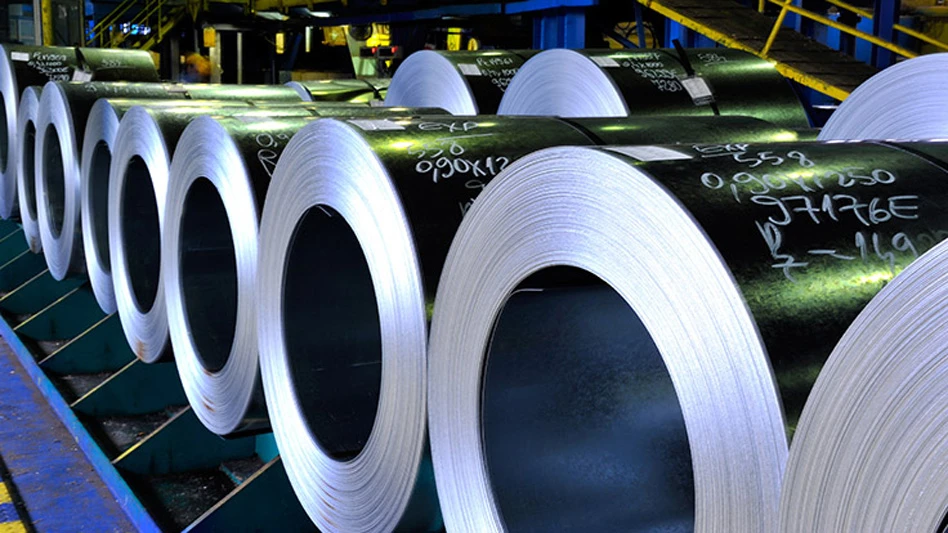
Mircea Bezergheanu | Dreamstime.com
The following commentary was provided to Recycling Today by Mexico City-based trade association Canacero, which represents steel producing and manufacturing companies in Mexico. It is authored by Canacero Director General Salvador Quesada Salinas, who cites the U.S. Census Bureau and the SIMA (Steel Import Monitoring & Analysis) service of the U.S. International Trade Commission.
We have heard ominous warnings about a flood of Mexican steel threatening the United States market. It's the kind of rhetoric that gets thrown around often with little regard for the facts.
The reality is that the Mexican steel surge is simply not happening, and the U.S. steel industry has consistently maintained a significant trade surplus in finished products with Mexico. In 2023 alone, this surplus exceeded $3 billion.
When excluding semifinished steel, that U.S. mills are buying to roll in the US, exports from Mexico have trended down significantly during the last year and a half, while at the same time U.S. exports to Mexico have grown massively.
Imports from Mexico for finished steel products declined 28 percent in 2023 from 2022. Through the first four months of 2024, the declining trend continues (-12 percent compared with the same period in 2023).
The widely cited Mexico “surge” in finished steel products versus the Joint Statement’s (Agreement between the U.S. and Mexico to avoid mutual steel surges) baseline years of 2015-2017 was only 21,000 metric tons per month in 2023 (+12 percent), for a market of almost 100 million tons per year.
Now, let's look at the U.S., where the export rate of flat-rolled steel from the U.S. into Mexico has been skyrocketing over the last few years.
In 2023, U.S. flat-rolled steel exports to Mexico increased by 14 percent compared with 2022 and represent 60,000 metric tons per month above the 2015-2017 Joint Statement’s baseline years ( an increase of 29 percent).
After the first four months of 2024, the deviation has grown to 77,000 metric tons per month (+38 percent versus the baseline years). Considering that Mexico is a far smaller consumer market of steel than the United States, the impact is significantly higher.
This dynamic should not surprise us. Beyond specific interests, the reality is that the U.S. and Mexico aren’t just trading partners: they're integral parts of each other's supply chains. In terms of market share, Mexican steel represents 2.5 percent of U.S. market share, while steel from the U.S. represents 14 percent of Mexico's market share.
This isn’t a zero-sum game where one country wins and the other loses. It’s about collaboration, efficiency and building a stronger North American economy, which is constantly under attack by dumped steel from places like China or countries such as Vietnam.
In fact, Mexico has been taking a significant number of measures to defend the country and the region against unfair competition and to avoid transshipments from third countries to the U.S. market through Mexico.
By acknowledging the true dynamics of steel trade between the U.S. and Mexico, we can better address the real challenges facing our industries. This will allow us to focus on enhancing our competitive edge in the global market, attracting investments through the relocation of global value chains, and ensuring the sustainability and growth of our economies.
We strongly believe that engaging in a steel trade war between Mexico and the U.S., resulting in mutual market closures, will diminish the region’s competitiveness in the steel industry. More critically, it will undermine the value chains we aim to foster, stunting growth and weakening our industries.
Latest from Recycling Today
- BMW Group, Encory launch 'direct recycling’ of batteries
- Loom Carbon, RTI International partner to scale textile recycling technology
- Goodwill Industries of West Michigan, American Glass Mosaics partner to divert glass from landfill
- CARI forms federal advocacy partnership
- Monthly packaging papers shipments down in November
- STEEL Act aims to enhance trade enforcement to prevent dumping of steel in the US
- San Francisco schools introduce compostable lunch trays
- Aduro graduates from Shell GameChanger program





